
- Home
- Material
- Metal
- Period
- 1795 - 1900 (57)
- 17th Century (3)
- 18th Century (2)
- 1901 - 1999 (44)
- 1930s (2)
- 1940s (3)
- 1950s (2)
- 19th Century (2)
- After 2000 (8)
- Before 1900 (2)
- Feudal Coinage (2)
- Feudal Currency (17)
- Francs 1962 - 1997 (2)
- Imperial 96 - 235 Ad (21)
- Old Francs 20th (2)
- Old Francs Xxth (2)
- Republic 300 - 27 Bc (6)
- Royal Coinage (11)
- Royal Currency (85)
- Other (4087)
- Style
- Type
- 5 Francs (3)
- 5 Points (3)
- Book, Work (7)
- Chips (3)
- Coin (22)
- Ecu Vertugadin (2)
- Essai (4)
- Foreign Medals (4)
- French Medals (16)
- Insigne, Décoration (2)
- Jetons (63)
- Livre, Ouvrage (7)
- Medal (8)
- Monnaie De Paris (45)
- Médaille (2)
- Médaille Belge (2)
- Paris Mint (10)
- School Poster (6)
- Tokens (51)
- Écu D'or Au Soleil (2)
- Other (4098)
- Year
Very Rare Gold Coin from Thailand Patani Kupang Arabic Muslim Issue Al-Adil
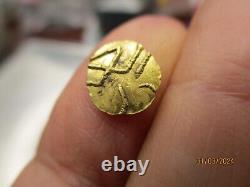
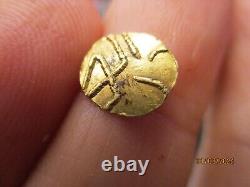
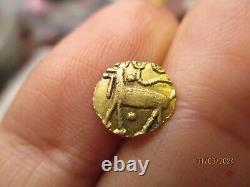
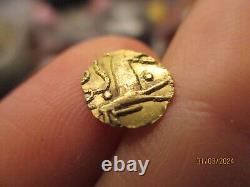
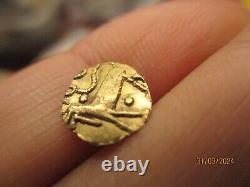
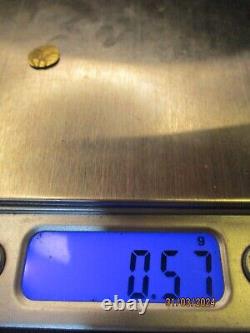


Or Very Rare Thailand Patani Kupang Arabic Muslim Issue Al-Adil. This product sheet has been automatically translated.
If you have any questions, please feel free to contact us. I think this is a contemporary Kupang issued in PATANI Muslim writing? A local expert identified it as a Kupang from 1800 to 1850, very rare (very few gold coins were issued here). I found 2 pieces together at the burial. There is sand or dirt inside the notches and small cracks of the piece.I haven't touched it and it's as found. Just cleaned with a cloth. Found in Thailand, near Chonburi. 0.57 grams of gold.
This is a gold piece of Kijang Kupang issued in Patani-Kelantan Circa. 16th to 18th century with Arabic inscriptions on the reverse of the coin. Kelantan-Patani gold coins were only minted in one denomination, namely a Kupang, which contained about 9 grains (0.60 g) of gold. There were three types of Kelantan gold coins: Kijang coins, Sun Dinar coins with Arabic inscriptions on the reverse, and coins with Arabic inscriptions on both sides. Kijang coins are named after the motif of the Nandi/barking deer bull or Kijang on the obverse of the Kupang. Between 1400 and 1780, a number of gold coins or Kupang were known to be minted and used in Patani and Kelantan.Unfortunately, little is known about the history of Kelantan currency as these coins were not dated, except for the gold Kupang with the inscription "Al Julus Kelantan", which were issued after 1780. Unfortunately, little is known about the history of Kelantan currency as these coins were not dated, except.

